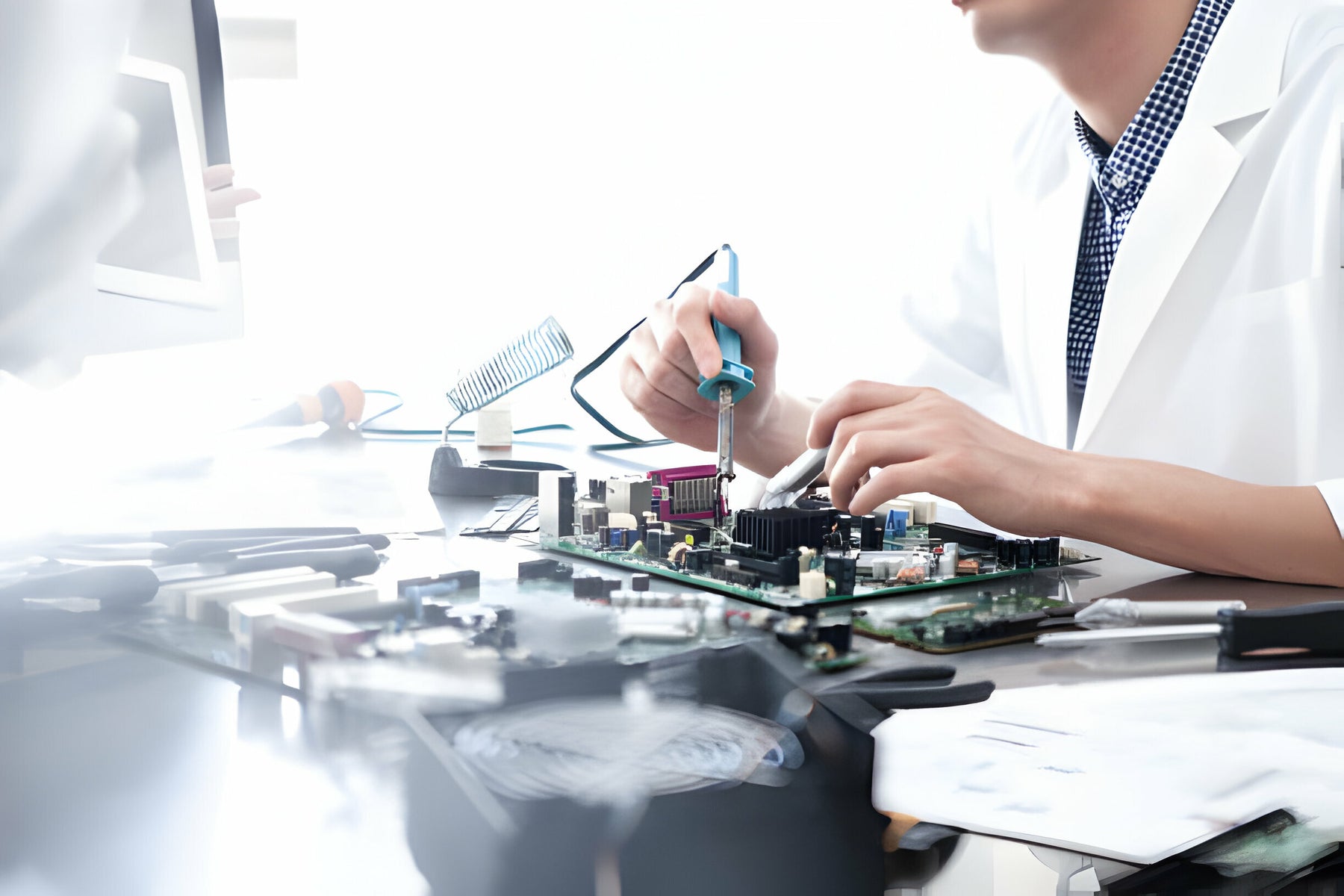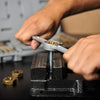
Unboxing Your Computer Toolkit: Essential Components Explained
In the realm of computer hardware and maintenance, possessing a well-equipped computer toolkit is akin to a chef having their own personalized set of knives. It's not just about having the right tools; it's about understanding the function and significance of each component within that toolkit.
For professionals who take their craft seriously, each tool serves a purpose, whether for building, repairing, or upgrading computer systems. This article delves deep into the heart of your computer toolkit, unpacking each essential component and explaining its significance. Our journey through the toolkit is designed for serious and savvy professionals who appreciate the nuances of high-quality tools and the critical roles they play in the maintenance and creation of computer systems.
As we unbox this toolkit, we are not merely looking at a collection of screwdrivers and pliers. We're exploring an arsenal tailored for precision, efficiency, and reliability. Each tool has been carefully selected and tested to meet the rigorous demands of computer hardware professionals.
From the delicate task of applying thermal paste to the CPU, to the meticulous process of managing cables for optimal airflow, every aspect of computer assembly and maintenance requires specific tools. This comprehensive guide will equip you with the knowledge to understand the purpose and potential of each tool in your kit, ensuring that you are prepared for any task that comes your way.
What are Computer Tool Kits?
In the labyrinthine world of computer maintenance and assembly, the significance of having a comprehensive computer tool kit cannot be overstated. These specialized kits are indispensable for both professionals in the IT field and enthusiasts who delve into the intricacies of computer hardware. A well-curated computer tool kit is not merely a collection of tools; it is a gateway to ensuring the efficient performance, troubleshooting, and longevity of computer systems.
At its core, a computer tool kit encompasses a variety of tools designed specifically for the tasks associated with computer repair and assembly. These tools are meticulously selected to address the myriad challenges that one might encounter when working with computer hardware.
As technology evolves, so too do the requirements for maintaining and assembling computer systems. Modern computer tool kits have expanded to include specialized tools that cater to the latest advancements in computer technology. This includes tools for M.2 drives, RGB lighting controllers, and custom water-cooling systems, among others. The evolution of computer tool kits reflects the ongoing advancements in computer technology, ensuring that professionals are equipped to handle the challenges of contemporary computer system maintenance and assembly.
Related Article: Computer Tool Kit Guide: Everything You Need to Know
Essential Tools of a Computer Tool Kit
At its core, a computer tool kit encompasses a variety of tools designed specifically for the tasks associated with computer repair and assembly. These tools are meticulously selected to address the myriad challenges that one might encounter when working with computer hardware. Below is an enumeration of the essential components typically found in a professional-grade computer tool kit:
Screwdrivers: The Backbone of Your Toolkit
- Precision Screwdrivers
- Magnetic Tips
- Variety of Sizes
No computer toolkit is complete without a set of screwdrivers. These are the backbone of your toolkit, used in almost every aspect of computer assembly and repair. Precision screwdrivers with magnetic tips are particularly valuable, allowing for easy manipulation of tiny screws without dropping them inside the case. A good set should include a variety of sizes, both flathead and Phillips, to accommodate the diverse screws found in computer hardware.
Anti-Static Wrist Strap: Safeguarding Components
- Prevents Electrostatic Discharge (ESD)
- Adjustable Strap
- Grounding Wire
The anti-static wrist strap is a critical safety tool for both the user and the components being worked on. It prevents electrostatic discharge (ESD), which can irreparably damage sensitive electronics. An adjustable strap ensures a snug fit, while the grounding wire must be connected to a grounded object, safeguarding components from static electricity buildup.
Thermal Paste: Ensuring Optimal Heat Conduction
- Thermal Conductivity
- Application Tools
- Types of Thermal Paste
Thermal paste, also known as thermal compound, is crucial for ensuring optimal heat conduction between the CPU and its cooler. High-quality thermal paste can significantly improve cooling efficiency, leading to better performance and longevity of the processor. It often comes with application tools, and there are various types, including metal-based, ceramic-based, and silicon-based pastes, each with its own thermal conductivity properties.
Cable Ties: Mastering Cable Management
- Nylon Zip Ties
- Velcro Straps
- Purpose and Application
Proper cable management is essential for both aesthetics and airflow within a computer case. Cable ties, including nylon zip ties and Velcro straps, help organize and secure cables neatly. Effective use of cable ties can significantly improve the internal appearance of a build and enhance airflow by reducing obstructions.
Hex Keys: For Standoffs and More
- Allen Wrenches
- Use in Computer Cases
- Sizes and Varieties
Hex keys, or Allen wrenches, are often required for installing standoffs in computer cases, which are used to mount the motherboard securely. A good toolkit should include hex keys in various sizes to fit different standoff specifications, ensuring a secure and stable installation of the motherboard.
Multimeter: Diagnosing Electrical Issues
- Voltage, Current, and Resistance Measurements
- Continuity Testing
- Essential for Troubleshooting
A multimeter is an invaluable tool for diagnosing electrical issues within a computer system. It measures voltage, current, and resistance, and can perform continuity tests to check for broken circuits. This tool is essential for troubleshooting power supply problems, faulty wiring, and other electrical components.
Compressed Air and Cleaning Brushes: Keeping Components Clean
- Dust Removal
- Safe Cleaning Practices
- Types of Brushes
Dust accumulation can impede airflow and lead to overheating. Compressed air is a safe and effective way to remove dust from sensitive components. Cleaning brushes, particularly those with soft bristles, are also useful for gently cleaning motherboards, graphics cards, and other parts without causing damage.
Flashlight or Headlamp: Illuminating Your Workspace
- LED Lights
- Hands-Free Operation
- Brightness and Focus
Good lighting is essential when working on computers, especially in poorly lit areas or inside cases. An LED flashlight or headlamp provides bright, focused light, allowing for hands-free operation. This ensures that you can see what you're doing without holding a light source.
Tweezers and Pliers: Handling Small Components
- Precision Tweezers
- Needle-Nose Pliers
- For Delicate Tasks
Tweezers and pliers are indispensable for handling small or delicate components such as jumpers, connectors, and screws. Precision tweezers allow for accurate placement and removal of parts, while needle-nose pliers are perfect for gripping and manipulating tiny objects in tight spaces.
Storage Case: Organizing Your Tools
- Customizable Compartments
- Portability
- Protection and Convenience
A durable storage case is the final, but no less critical, component of your computer toolkit. Customizable compartments allow for organized storage of tools, ensuring that everything has its place. A well-designed case offers portability for on-the-go repairs and protects your tools from damage and loss.
Empowering Your Tech Endeavors
Armed with a comprehensive understanding of each component in your computer toolkit, you are now better equipped to tackle any challenge that comes your way. Whether you're building a new system, upgrading an existing one, or performing routine maintenance, these tools are your allies in ensuring the job is done efficiently and effectively. Remember, a well-maintained toolkit is as important as the skills of the person using it. Taking care of your tools and understanding their functions inside and out empowers you to execute tasks with precision and confidence, solidifying your status as a serious and savvy professional in the world of computer hardware.



